George W. Hart
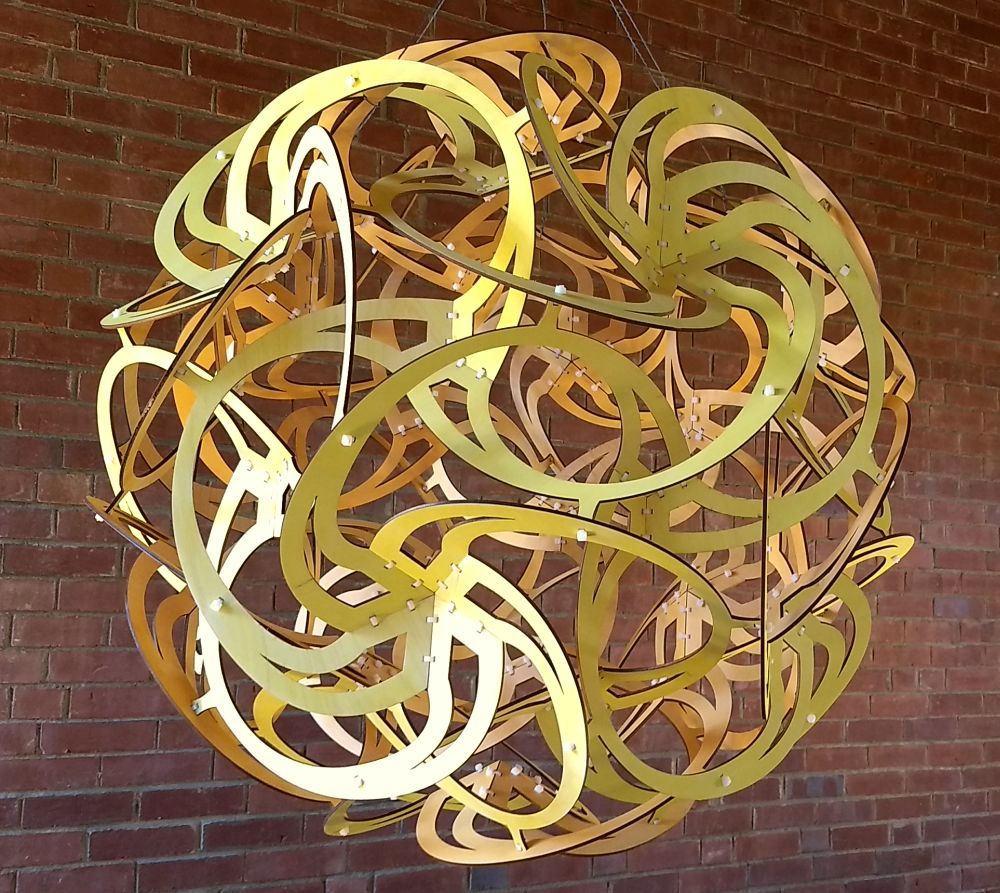
Eddy is a large wood
sculpture that I made with students at the Kimball Union Academy during a
two-day visit in October 2018. The name Eddy comes
from the design's swirling sense of motion, like a ball of
water.

The sculpture consists of sixty identical flat components, each shaped as shown, held together with 300 cable ties that pass through the eleven small rectangular holes. The parts were laser-cut from 6 mm thick plywood ahead of time. I beveled their four mating edges (18 degrees) with a belt sander on the morning of my arrival. On the first day, student groups sanded the faces with orbital sanders to remove any smoke marks. Later groups stained the parts with a water-based stain a bright yellow on the outside and a light glowing orange on the inside.
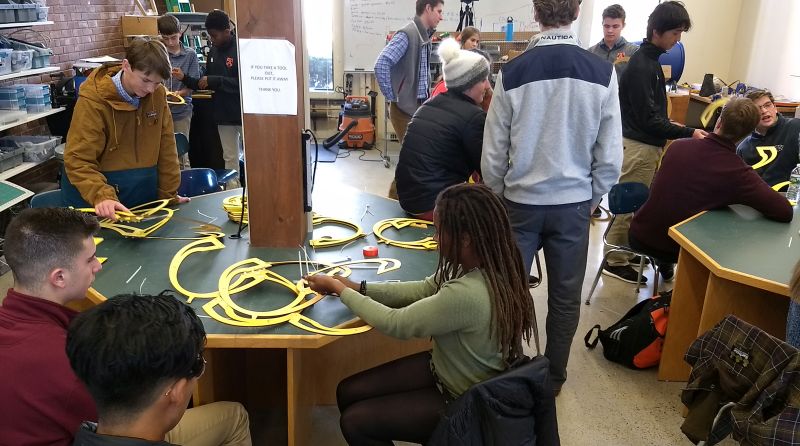

The sculpture consists of sixty identical flat components, each shaped as shown, held together with 300 cable ties that pass through the eleven small rectangular holes. The parts were laser-cut from 6 mm thick plywood ahead of time. I beveled their four mating edges (18 degrees) with a belt sander on the morning of my arrival. On the first day, student groups sanded the faces with orbital sanders to remove any smoke marks. Later groups stained the parts with a water-based stain a bright yellow on the outside and a light glowing orange on the inside.
To fully appreciate how the parts fit
together, it may help to watch the above animation of it
rotating. Part of what I find especially interesting
visually is how the 3-way joints are concave and the 5-way
joints are concave, and all the pieces are flat, yet the
overall structure is a convex ball. How is that
mathematically possible? (Compare it to a typical
polyhedron, in which the arrangement around each vertex is
convex, not concave.) And if you have an engineering
mindset, you will note the importance of the small tab and the
internal connection point on each piece (about 1/3 and 2/3 of
the way along the curve) which triangulate the overall
structure to make it rigid even though the components are
long, thin, and individually slightly flexible.

On the second morning, the actual assembly
starts. Students make modules from three components,
joining them at the obtuse angles. One fine point is
that we're being careful to place the cable ties in a
consistent manner, as the design is very much about
symmetry. So if you look inside the completed
sculpture, you'll see the heads of the cable ties all swirl
the same way.
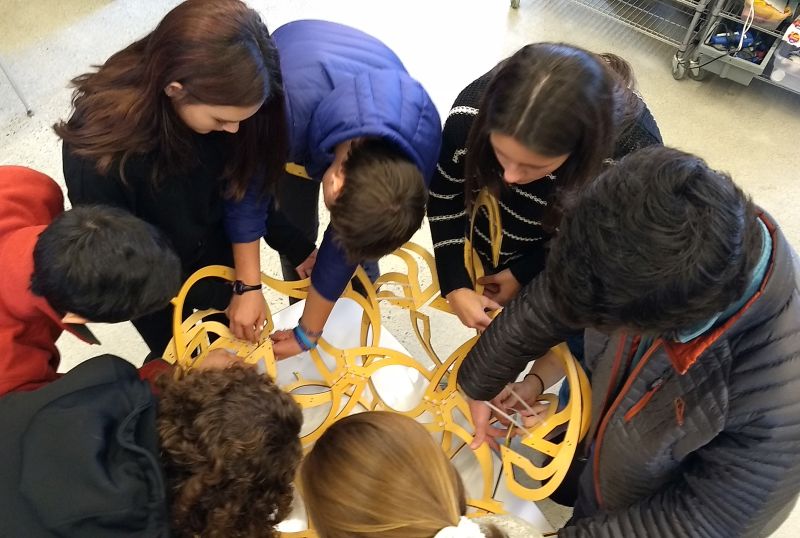

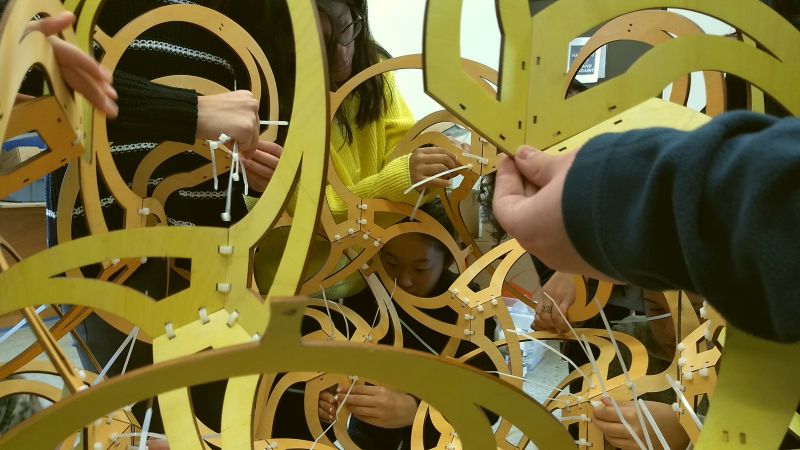
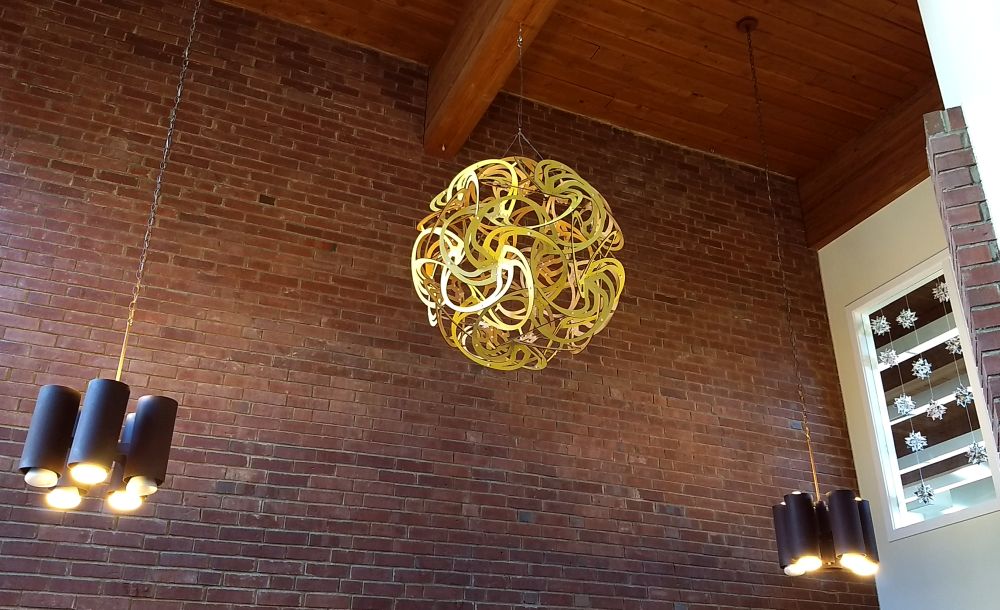

Next, five modules are brought
together. Getting the first five interwoven
properly is the most challenging step, because the long
arms want to form a big tangle. But with patience,
care, and an eye for symmetry, we get all the over's and
under's correct, then can join neighboring parts with
cable ties. The initial five-way whorl serves as a
pattern which can be followed when adding the next sets
of modules.

Additional modules can be added from all
sides with ten people working all around. Some
people hold them in place while others start inserting
the cable ties. Again we are being careful that
the ties are placed in a consistent, symmetric manner.

Cable-tying all the joints takes a
while. After they are checked and tightened, we
will clip off the tails of the ties. Note that
cable ties only last for ten or twenty years then become
brittle, so someone will have to redo them again every
decade or so to preserve the sculpture.

After completing it, we installed Eddy
in the two-story atrium of the lobby at KUA's new
maker space building in Meriden New Hampshire. To
see the entire two-day construction process in two
minutes, check out this entertaining time-lapse
assembly video.
Big thanks go to everyone at KUA who participated in this project, especially to all the student workers who did all the sanding, staining and assembly, to Sandy Reavill who organized all the arrangements, and to Kit Creeger who made the time-lapse video.
Big thanks go to everyone at KUA who participated in this project, especially to all the student workers who did all the sanding, staining and assembly, to Sandy Reavill who organized all the arrangements, and to Kit Creeger who made the time-lapse video.